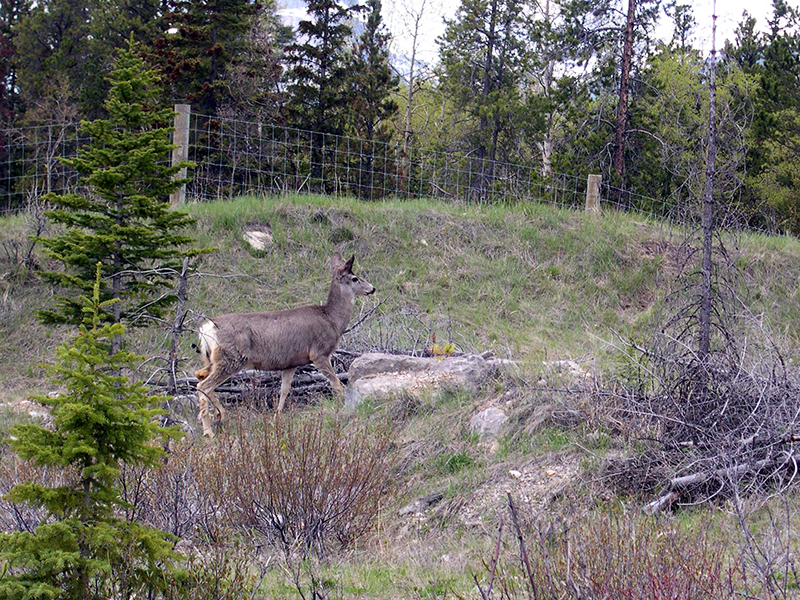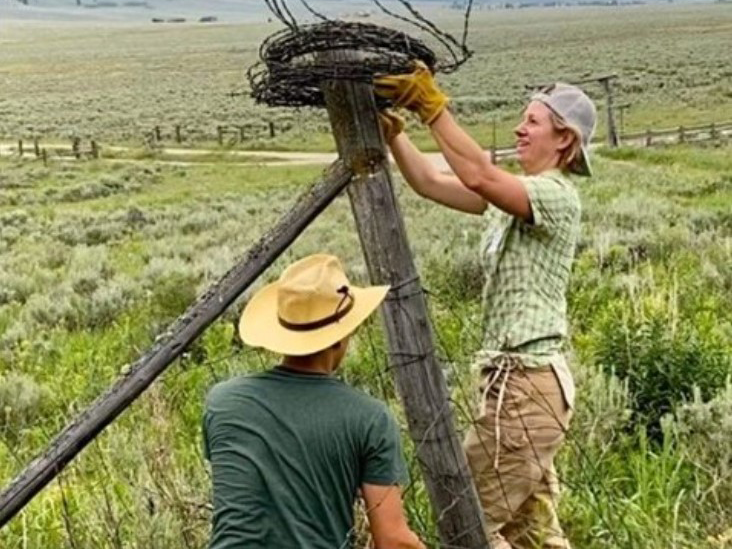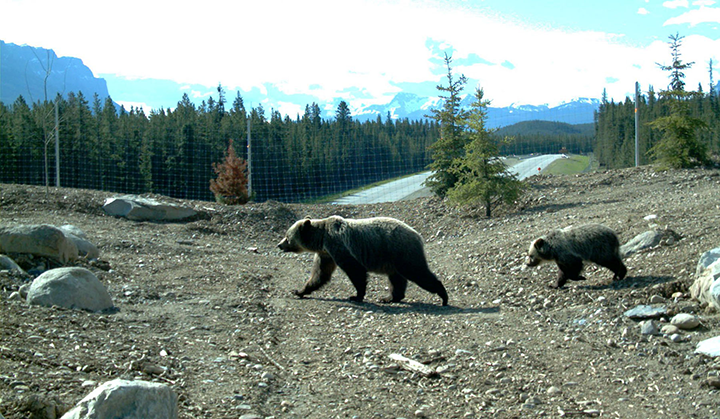The importance of wildlife-friendly fences shouldn’t be underestimated

This guest post is courtesy of Hannah Rasker, Y2Y’s communities and conservation co-ordinator. Her current work focuses on co-ordinating projects that benefit people and wildlife, including land-use planning, recreation management and coexistence with grizzly bears. She has a passion for solutions that allow people and nature to thrive.
Wildlife crossings help wildlife and people thrive.
But have you ever wondered how fencing keeps people and wildlife safe?
You wouldn’t be the first. People often understand the concept of wildlife overpasses and underpasses but are less clear on the need for fencing.
Fencing is at the core of a successful wildlife crossing project. It guides wildlife to safe crossing points while keeping them off roads, avoiding wildlife-vehicle collisions.
In Banff National Park, highway fencing and crossings have reduced collisions by more than 80 percent.
Fencing and wildlife crossings also keep animals connected. Wildlife can move safely and disperse, which means they can find food, habitats, mates, reproduce, and maintain genetic diversity. In other words, when they can move, they can survive.
Do wildlife-friendly fences make a difference?
Wildlife fences make a big difference for animals and people!
Take Highway 95 in north Idaho for example.
For more than 10 years, three wildlife underpasses and fencing along Highway 95 in north Idaho reduced wildlife-vehicle collisions and kept the landscape connected for big game species, including black bears and mule deer.
But over time, holes appeared in the fence and animals were bypassing the fencing on one end, leading to an increase in wildlife-vehicle collisions.
This area is critical for wildlife movement between the Selkirk and Purcell mountains. For this reason, the fencing needed to be fixed.
In partnership with the Idaho Transportation Department, Idaho Fish and Wildlife Foundation, and Idaho Fish and Game, we repaired the existing highway fencing and added a mile-long extension on U.S. 95 north of Bonners Ferry, Idaho.
Today, safe passage has returned!

Aren’t fences all the same?
Not for homeowners!
As Y2Y’s communities and conservation co-ordinator, part of my work involves working with landowners to increase wildlife habitat connectivity in the Yellowstone to Yukon region.
Homeowners, ranchers, farmers, and others have the opportunity to be great neighbors to their four-legged friends through their fence selection.
They can consider how wildlife move over or under fences and choose options to limit injury. For example, pronghorn need a smooth bottom fence-line that is high enough for them to crawl under safely.
But adding new fencing isn’t the only option. People can also consider whether there is old fencing they can remove on their property to avoid wildlife getting caught in abandoned barbed wire fences.

How do fences help people and animals live in harmony?
Fencing can also help wildlife and people coexist by keeping wildlife out of trouble!
Electric fencing, for example, gives wildlife a zap when they have come too close to a livestock pen or chicken coop. This keeps animals, such as bears, safe from unnatural food sources while also keeping people and property safe.
A fence symbolizes how we interact with the landscape. Landowners that are allowing wildlife to move through their property with ease or use an electric fence to prevent disturbances, are providing safe passage for animals.
A fence is not just a fence! It represents how we live on the land and with wildlife, and how we see ourselves as part of the natural world. It’s a real pleasure to work with willing landowners to keep wildlife moving!



